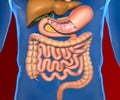
The study provides information from 2007, trends from 1982 to 2007, and estimations for 2010. In 2007, a total of 108,368 new cases of cancer (excluding basal and squamous cell carcinoma of the skin) and 39,884 deaths from cancer occurred in Australia. Men were most often diagnosed with prostate cancer, while women were most often diagnosed with breast cancer. Lung cancer was by far the most common cause of cancer death in both males and females.
When looking at trends, the investigators found that the number of new cancer cases diagnosed each year increased from 1982 to 2007 for both males and females, which can be explained by the aging and increasing size of the population. In females, the overall cancer incidence rate rose from 1982 through the early 1990s, after which the rate remained relatively stable. In males, the overall cancer incidence rate rose from 1982 to 1994, followed by a decline in rates until the late 1990s, when rates began to rise again. From 1982 to 2007, cancer death rates have decreased steadily for both sexes, so that the five-year survival rates for many cancers have improved markedly since the 1980s.
The report uncovered certain disparities in cancer incidence and death rates in recent years. Most notably, the overall incidence rate of cancer for Indigenous Australians was lower than that for non-indigenous Australians, while the overall death rate from cancer was higher. More diagnoses at advanced stages, less uptake of cancer treatments, and a greater number of other illnesses may contribute to the higher death rates in Indigenous Australians.
To provide a more current picture of the cancer burden in Australia, the authors extrapolated their findings to 2010, noting that about 113,700 new cases of cancer (excluding basal and squamous cell carcinoma of the skin) were expected to be diagnosed last year. Of these, 63,200 were expected to be in males and 50,500 in females. Compared with the numbers of new cancer cases diagnosed in 2007, this equates to a 2 percent increase in males and a 9 percent increase in females, mainly due to aging and growth of the population. Prostate cancer, bowel cancer, and melanoma of the skin in males, and breast cancer, bowel cancer, and melanoma of the skin in females were expected to continue to be the most commonly diagnosed cancers in 2010.
The researchers also looked at rates of participation in Australia's national screening programs for breast, cervical, and bowel cancers. From 2007 to 2008, over 1.6 million women had a screening mammogram through BreastScreen Australia, which translates to a participation rate of 55 percent for women in the target age group of 50 to 69 years. During that same time, over 3.6 million women participated in the National Cervical Screening Program, a participation rate of 61 percent for women in the target age group of 20 to 69 years. Also, almost 280,000 people (40 percent of those invited) participated in the National Bowel Cancer Screening Program in 2008. More information about these programs can be found at http://www.cancerscreening.gov.au.
Advertisement
Source-Eurekalert














